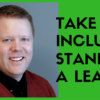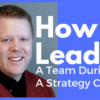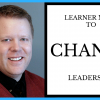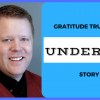Lean is rooted in a ‘learn then do’ model. Traditional classroom training usually does not translate into more skillful means.
During a given course I utilize multi-modal education and a 12 week follow on review process with you to help maximize the training dollars you invested. Your responsibility is to advocate and make space for the learnings to be applied.
This type of transformative adult education necessarily results in typically a 2-4 week dip in efficiency (usually 40%) before the new learnings are embodied and significant efficacy achieved.
I customize each education based on your needs. Below you’ll find a basic structure that has proven successful over more than 20 years but I advocate that your unique culture and objectives should take precedence over the traditional TPS roll out.
Basic
- 5S
- Waste (muda)
- Unevenness (mura)
- Unreasonableness (muri)
- Observation & spaghetti diagrams
- Standard work
- Standard work combination
- Takt time, Cycle time, & lead time
- Value stream mapping
- Gemba walk for impact
Intermediate
- Work instruction
- Abnormality signaling (Andon)
- Line of balance, level loading, & resource scaling
- SIPOC
- Single Piece Flow & Batch optimization
- Pull systems (material & transactional)
- Cell creation (material & transactional)
- Material & transactional PFEP
- Sustainment, audits, & metrics
- Simulation
Advanced
- Hanedashi & chaku-chaku (material & transactional)
- 7 Ways
- Kanban, market creation, & distribution (EPEI)
- Continuous flow
- Lean accounting
- Pulse & continuous line creation
- Error detection, handling, & error proofing (Poka-yoke)
Six Sigma DMAIC methodology & Statistical Process Control (SPC)
Six Sigma and the scientific method (DMAIC) for all its promise has been highly misunderstood, misapplied and devoured massively scarce resources the world over.
In avoiding the ‘sins of the past’ I have experienced and witnessed in many industries I customize each education based on your unique culture, your objectives and a candid discussion about what you can expect.The power of the methodology is enormous and vast. In that, I find that a trusted guide is needed to navigate this very powerful technology so you don’t drown in tools.
During a given course I utilize multi-modal education and a 12 week follow on review process with you to help maximize the training dollars you invested. Your responsibility is to advocate and make space for the learnings to be applied. This type of transformative adult education necessarily results in typically a 2-4 week dip in efficiency (usually 40%) before the new learnings are embodied and significant efficacy achieved.
Additionally, because Six Sigma is a project based methodology I work with you to ensure a meaningful and healthy project pipeline is in place so that learnings are not only applied but impact is felt.
Steps in this Process
Define
- Team formation, project definition, & influence skills
- Tree diagrams and fishbone diagrams Interaction loops
- Quality Functional Deployment (QFD)
Measure
- Gauge Repeatability & Reliability (GR&R)
- Process mapping
- Data collection sheet
- Failure Modes & Effects Analysis (FMEA) & process risk management
Analyze
- Hypothesis testing (basic continuous & discrete statistics)
- Basic time series analysis (including seasonality/cyclicality)
Improve
- Design of Experiments (DOE)
- Correlation, regression, pattern recognition and modeling (continuous & discrete statistics)
Control
- Error detection, handling, & anticipation (control charting)
Integral Leadership
Ken Wilbur’s writings and exposition on integral theory is massive. However, it was not his intent to translate the concepts into the various practical applications.
Integral theory as applied to leadership has some unique and counterintuitive practices. This style of leadership is in stark contrast to the command-and-control industrial model which dominates organizations today. Integral management engages a much wider range of what people offer.
The leap for an organization looking for a competitive edge through their people starts with leadership authentically embracing and serving their organization. The breakthrough comes from cultivating and attracting expanding talent.
Non-violent Communication
Change, conflict, and breakthrough are all very similar. The difference lies in how we communicate, regard ourselves and others.
Non-violent communication (NVC) does not eliminate the passion but rather allows for it and focuses on exchanging needs. What unfolds using NVC is typically a respectful, trust building and productive exchange of passions and viewpoints.
Efficacy is built through practice rather than just knowledge because when an impassioned exchange arises, our cognitive brain is easily bypassed. Therefore, our ability to skillfully communicate is severely handicapped without a new habit of mind. Allowing for and improving in this type of respectful and thoughtful communication pattern enables people to more completely engage in the collective enterprise.
During a given course I utilize multi-modal education and a 12-week follow on review process with you to help maximize the training dollars you invested. Your responsibility is to advocate and make space for the learnings to be applied.
This type of transformative adult education necessarily results in typically a 2-4 week dip in efficiency (usually 40%) before the new learnings are embodied and significant efficacy achieved.
Creating & sustaining the learning organization
Peter Senge wasn’t the first nor only person to develop this concept but he certainly did the most to further public awareness on the concept. There are some great resources available to better understand a learning organization.
However, I have firsthand knowledge and experience designing, building and implementing such an organization. This as an educational offering is to highlight and gain some hands on experience with some of the methods and concepts.
If further capability is sought, I recommend a coaching relationship around this kind of topic be agreed upon rather than further ‘training’.
For even deeper education here, see the “Leading and ‘solving’ complex or divergent problems” section on the Coaching Services page.






Follow Us!